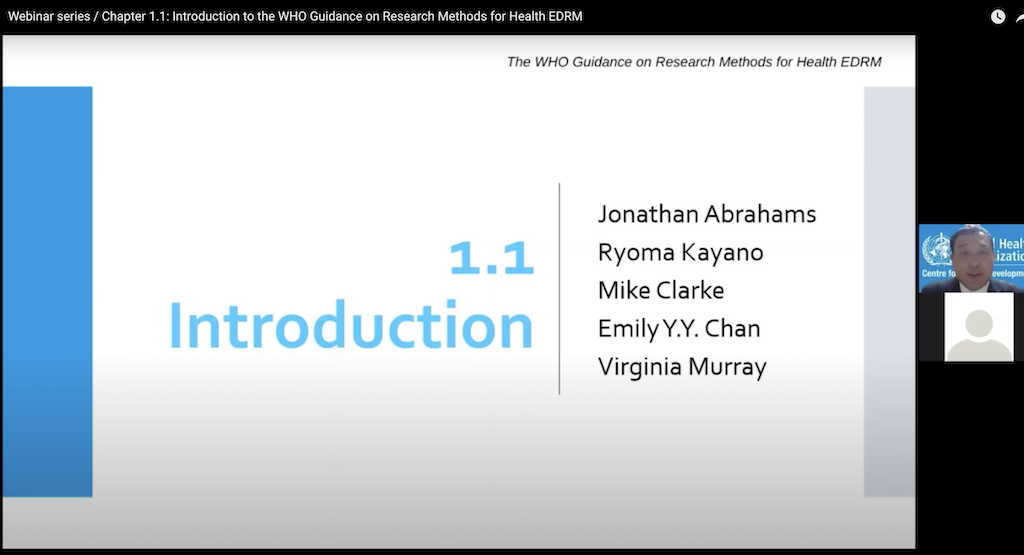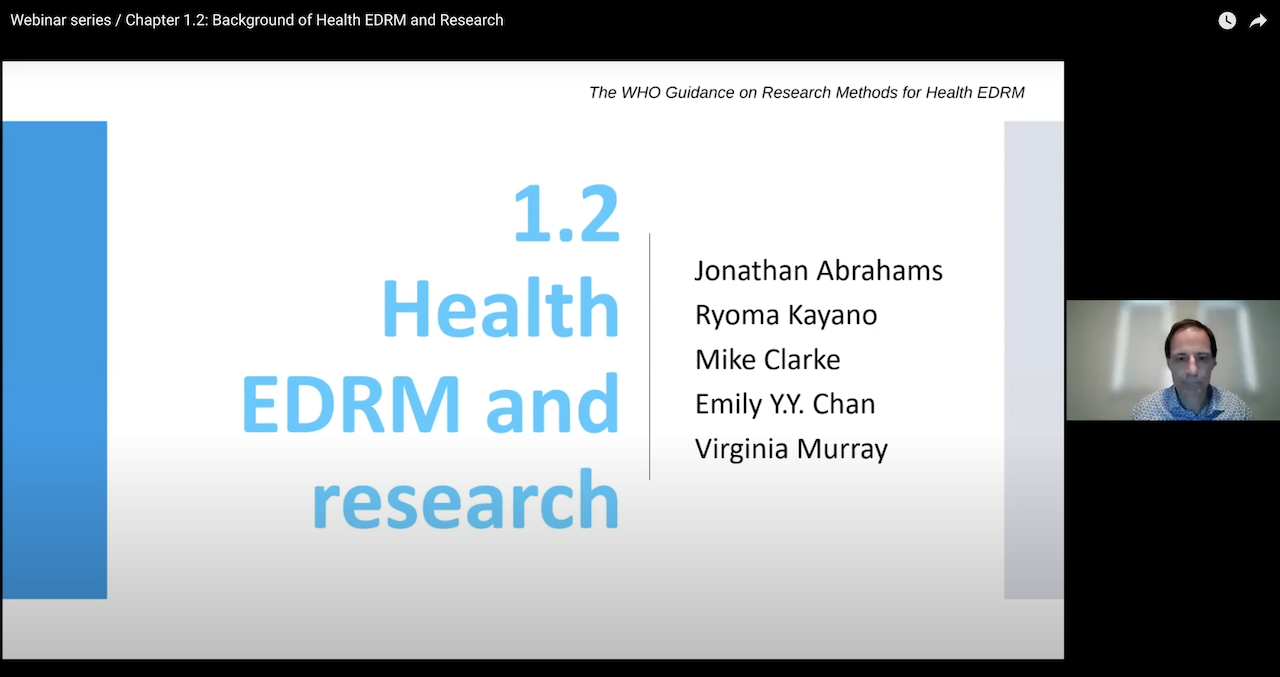Section 1: Introduction

Chapter 1.1 Introduction
Chapter 1.1 introduces the rationale, context, and structure of the WHO Guidance on Research Methods for Health Emergency and Disaster Risk Management.
What is this chapter…

Chapter 1.2 Background
Chapter 1.2 introduce the WHO health emergency and disaster risk management (Health EDRM) Framework and the role of research in Health…

Chapter 1.3 Historical developments in Health EDRM policy and research: the case study of Japan
Chapter 1.3 describes the importance of research evidence for health emergency and disaster risk management (Health EDRM) policy and practice, considering Japan as a case study.…
Section 2: Identifying and understanding the problem
Chapter 2.1 Using epidemiological principles to assess impacts of emergencies and disasters
Adequate description of the impact of a disaster, or any other significant health event, is a challenge. Epidemiological research describing both the causes and consequences of disasters can help…
Chapter 2.2 Measuring the health impacts of disasters
Chapter 2.2 covers the following key factors relating to measuring the health impacts of disasters:
- The importance and relevance of measuring the health impacts of disasters.
- …
Chapter 2.3 Disease burden: generating evidence, guiding policy
Chapter 2.3 describes the basic concept of disease burden and its potential in identifying and understanding the health issues surrounding a disaster, in particular:
- The strength of…
Chapter 2.4 Databases and registers as tools for disaster epidemiology
Chapter 2.4 describes the three major types of databases and registers available to disaster epidemiology researchers, and their associated strengths and weaknesses by:
- Characterising…
Chapter 2.5 Identifying and engaging high-risk groups in disaster research
Chapter 2.5 describes how to identify and support high-risk groups in disaster research by:
- Describing high-risk groups in the community.
- Addressing barriers to inclusion…
Chapter 2.6 The current state of the evidence: Mapping the evidence and systematic reviews
Chapter 2.6 describes the importance of the following when considering the current state of the evidence and systematic reviews as a source of information for research in health emergency and…
Chapter 2.7 Prioritization of research
Chapter 2.7 explains the key factors to consider when preparing, developing and evaluating a research prioritization exercise in health emergency and disaster risk management (Health EDRM),…

